Religious Trauma and Treatment-Resistant Depression


July 24, 2025
Understanding the Deep-Rooted Impact of Religious Trauma on Chronic Depression
Religious trauma and treatment-resistant depression (TRD) are intricately linked phenomena that challenge mental health professionals and sufferers alike. Exploring how harmful religious experiences, spiritual injuries, and the persistence of depression intertwine reveals the importance of tailored, trauma-informed approaches. From neurobiological impacts to culturally sensitive therapies, this comprehensive overview aims to illuminate pathways toward healing and resilience within the context of faith and trauma.
Prevalence and Significance of Depression Globally and in Medical Settings

How widespread is depression around the world, and what does it mean for public health?
Depression is a major global health concern, affecting approximately 300 million people worldwide. According to the World Health Organization, it is the leading cause of ill health, disability, and economic burden internationally. Its pervasive impact underscores the urgency of effective prevention and treatment strategies.
What is the prevalence of depression among patients with chronic illnesses?
Patients with chronic medical conditions face a heightened risk of depression. Studies indicate that the point prevalence in this group can be as high as 10% to 45%, significantly complicating their overall health management. Chronic illnesses such as diabetes, heart disease, and cancer often exacerbate feelings of hopelessness and emotional distress, which can impair treatment adherence and worsen health outcomes.
How does depression influence health, immune function, and recovery?
Depression doesn’t just affect mood; it also influences immune and endocrine systems. It can lead to increased inflammation, impaired immune response, and altered cortisol levels, making patients more susceptible to infections and inflammatory disorders. These biological changes potentially elevate the risk for additional complications, including some cancers.
What are effective ways to treat depression, particularly when trauma or chronic illness are involved?
Trauma-related depression, especially in individuals with a history of early life trauma, can be challenging to treat but remains responsive to specialized therapies. Eye Movement Desensitization and Reprocessing (EMDR) has shown promising results by effectively reprocessing traumatic memories, reducing their emotional burden, and alleviating depressive symptoms. This therapy employs bilateral stimulation, such as guided eye movements, to facilitate neurobiological healing.
How does EMDR work in treating trauma-related depression?
EMDR involves structured phases: history taking, preparation, assessment, reprocessing, and installation. It targets deep-rooted beliefs and traumatic memories, fostering neuroplasticity—the brain’s ability to reorganize itself. Studies highlight that many patients experience significant reductions in depression severity shortly after EMDR, with effects often lasting at least a year.
Are there cultural or spiritual practices that can complement EMDR?
Yes. Cultural practices like Sufi Dhikr, which involves rhythmic movements and repetitions, can produce eye movements similar to those used in EMDR, potentially amplifying healing. Incorporating spiritual elements that resonate with the individual’s background can enhance therapeutic engagement and outcomes.
What other therapies support trauma-informed depression treatment?
Religiously integrated cognitive-behavioral therapy (RCBT) is another promising approach that combines spiritual beliefs with standard CBT techniques. It helps clients challenge negative thoughts rooted in trauma or religious guilt, fostering resilience and acceptance.
Can combining therapies optimize treatment?
Integrating approaches, such as EMDR with RCBT or mindfulness practices, tailored to the individual’s cultural and spiritual context, can enhance recovery. Personalized therapy plans that consider trauma history, spiritual beliefs, and social support are essential for achieving optimal results.
| Therapy Type | Focus | Cultural/Spiritual Relevance | Expected Outcomes |
|---|---|---|---|
| EMDR | Trauma reprocessing | Can incorporate cultural practices like Dhikr | Significant reduction in trauma and depressive symptoms |
| RCBT | Challenging negative beliefs | Integrates religious/spiritual beliefs | Builds resilience, reduces guilt and shame |
| Mindfulness | Present-awareness | Adaptable to different spiritual backgrounds | Reduces anxiety and depressive symptoms |
| Psychodynamic | Uncovering unconscious conflicts | May include spiritual themes | Long-term personality changes |
Understanding and treating depression, especially when trauma and cultural factors are involved, requires a comprehensive, personalized approach. Therapies like EMDR, enriched with cultural and spiritual considerations, hold promise for more effective recovery and improved quality of life.
Understanding Religious Trauma, Its Causes, Symptoms, and Effects on Depression
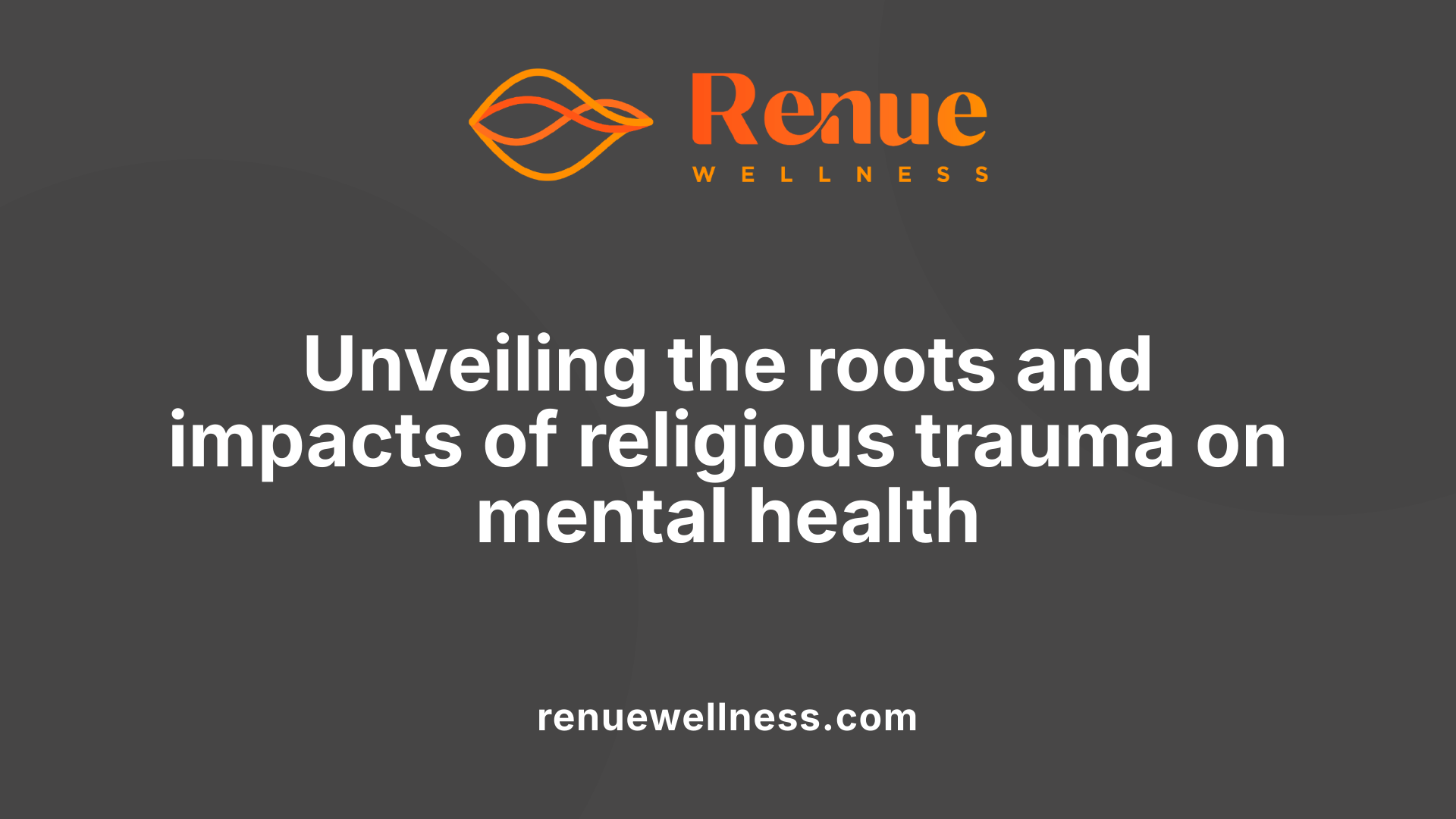
What are the causes, symptoms, and effects of religious trauma?
Religious trauma stems from harmful, often abusive or authoritarian religious experiences. These experiences frequently involve the use of guilt, shame, fear, and control to manipulate or suppress individuals. Such trauma can be perpetuated by rigid religious institutions, strict communities, or destructive leadership that enforces strict dogmas and punishes dissent.
The causes may include spiritual abuse, spiritual or moral coercion, rejection, ostracism, or toxic environments where faith becomes a source of distress instead of support. For example, doctrines that promote fear of divine punishment, or practices that shame individuals for their identity or beliefs, contribute significantly to traumatic experiences.
Symptoms of religious trauma can be both emotional and spiritual. Common manifestations include depression, anxiety, pervasive guilt, and shame. Many sufferers also experience self-hatred, hypervigilance, and difficulties with identity. They may struggle with forgiving themselves or others, and experience persistent feelings of worthlessness.
Spiritual struggles are frequent, and individuals might feel abandoned or punished by their Higher Power. These symptoms often lead to broader mental health issues such as PTSD, OCD, and eating disorders. The trauma might also cause intrusive thoughts, avoidance behaviors, and strained relationships with family and community.
The long-term effects of religious trauma on mental health and well-being are profound. It can result in social isolation, loss of purpose, and feelings of hopelessness. For some, disillusionment with faith communities leads to alienation, disrupting their social and spiritual support networks.
Moreover, these unresolved wounds can exacerbate depression, making recovery more complex. In some cases, religious trauma reinforces negative core beliefs, which hinders emotional growth. The person may also be at higher risk for suicidal thoughts, especially if the trauma involves betrayal or disillusionment.
Healing from religious trauma requires trauma-informed approaches. Therapy guided by mental health professionals trained in religious trauma can facilitate reprocessing of the distressing memories and beliefs. Spiritual or faith-based interventions that acknowledge individual experiences and foster safe exploration of beliefs often play a role. Support groups and peer networks can provide validation and understanding.
Addressing both the emotional and spiritual effects of religious trauma is crucial. Integrating methods like EMDR therapy, which helps reframe negative beliefs, with supportive community involvement can foster recovery. Overall, healing involves rebuilding trust, self-compassion, and establishing healthy spiritual concepts, enabling individuals to regain control over their mental health and life trajectory.
The Role of Spiritual Harms, Spiritual Struggles, and Conversion Practices in Depression and Trauma
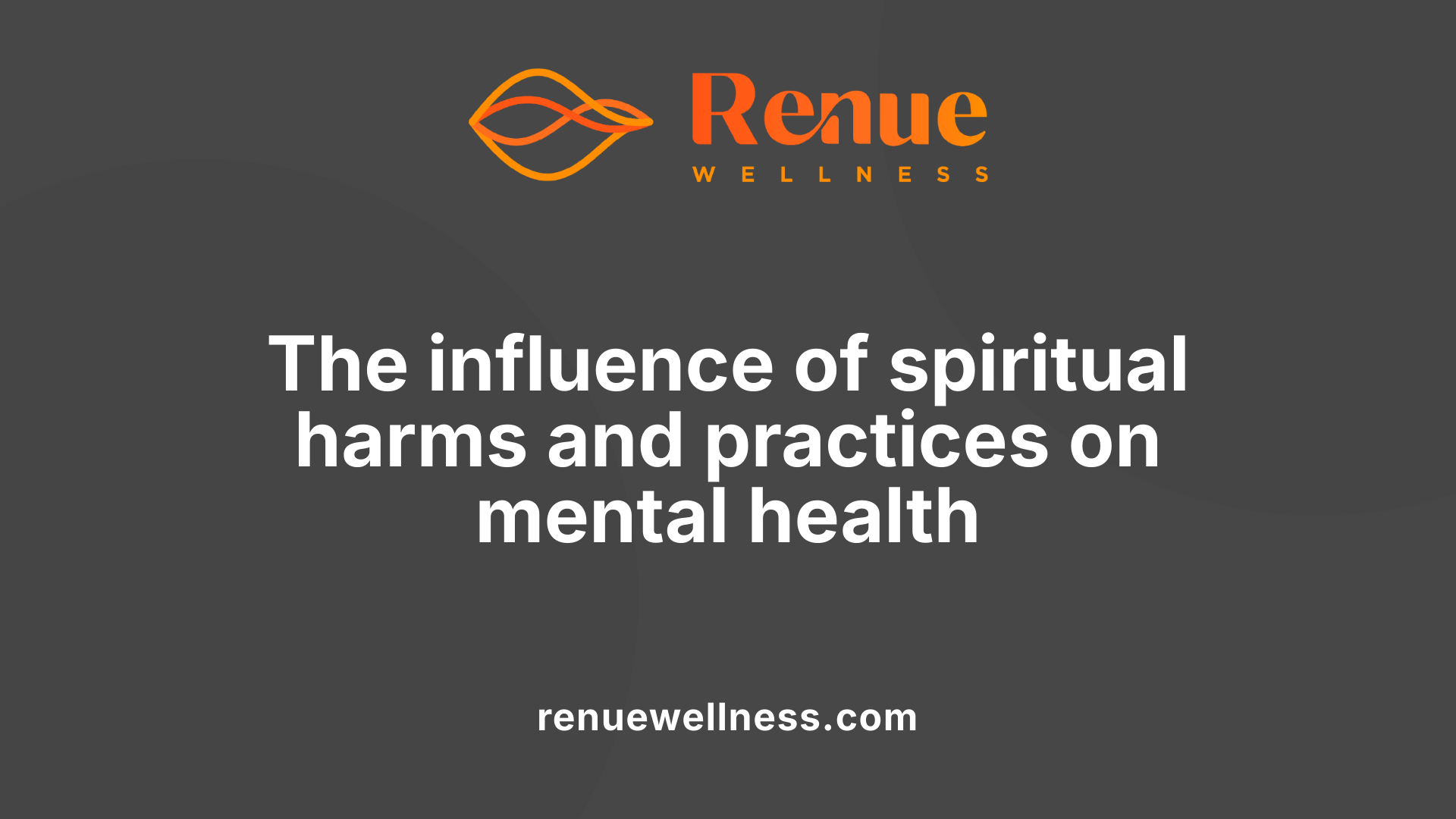
How do spiritual harms, spiritual struggles, and conversion practices impact depression and trauma?
Spiritual harms, such as religious trauma and moral injury, can have profound and lasting effects on mental health. These harms often stem from experiences of spiritual abuse, rigid dogma, and toxic environments within certain religious communities. Survivors frequently report feelings of shame, guilt, betrayal, and disconnection from their authentic selves. Such internal conflicts can intensify symptoms of depression, anxiety, and post-traumatic stress disorder (PTSD).
Conversion practices, which are rooted in pseudo-scientific beliefs that all individuals are inherently heterosexual or aligned with gender identity at birth, often aim to change or suppress LGBTQ+ identities. These practices can cause significant psychological distress, as they reinforce internalized homophobia, shame, and rejection. Participants in these practices frequently experience long-term negative outcomes including increased depression, suicidal ideation, and emotional trauma.
Religious trauma related to these harmful practices and beliefs does not end when practices cease. Many individuals carry lasting grief, spiritual dissonance, and loss of faith, which can undermine self-worth and trust. Survivor accounts highlight a spectrum of spiritual injuries—ranging from feelings of abandonment and guilt to an ongoing struggle to reconcile their identity with their religious upbringing. These spiritual injuries often persist and compound mental health challenges even years after abandoning toxic practices.
Addressing these deep-seated harms requires a culturally sensitive approach to mental health care. Integrating spiritual care acknowledges the importance of spiritual identity and injury. Therapies like EMDR and trauma-focused cognitive-behavioral therapy (CBT) can effectively process traumatic memories associated with spiritual and religious harms. Policies banning conversion therapy and the creation of affirming, inclusive religious environments are crucial preventative measures. These steps help mitigate future harm and support the healing journey of survivors.
In summary, spiritual harms, struggles, and forced conversion practices have a significant impact on depression and trauma. Recognizing and addressing these issues within mental health treatment is essential for fostering recovery and promoting spiritual and emotional well-being.
Influence of Religiosity on the Development and Persistence of Treatment-Resistant Depression
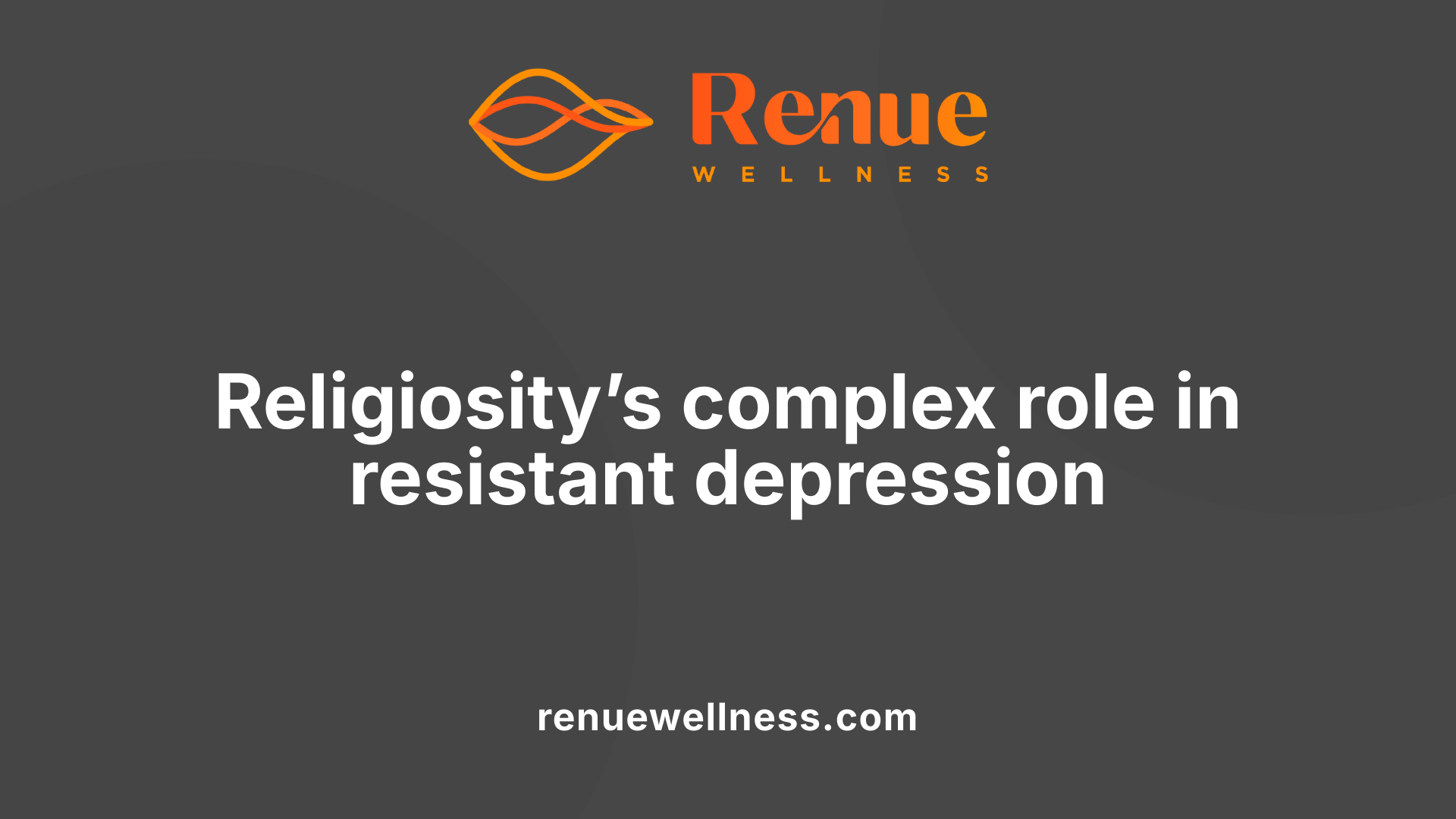
How does religiosity influence the development or persistence of treatment-resistant depression?
Religiosity can have a multifaceted impact on depression, including its development and persistence, especially in cases of treatment-resistant depression (TRD). On one hand, strict or rigid religious environments may foster feelings of guilt, shame, and spiritual turmoil, which can worsen depressive symptoms.
Conversely, many studies have found that religious and spiritual practices often serve as protective factors. Engaging in faith-based activities such as prayer, scripture reading, and involvement in religious communities can provide emotional comfort, social support, hope, and a sense of purpose — all crucial elements in combating depression.
Research indicates that higher levels of religiosity, especially when personal importance is high and combined with active participation, are associated with decreased risk of depression over time. For example, longitudinal studies show that individuals with strong spiritual involvement tend to recover more quickly from depressive episodes and show less suicidal ideation.
In clinical contexts, faith-enhanced therapies, such as religious psychotherapy or spiritually integrated cognitive-behavioral therapy (CBT), have demonstrated effectiveness in reducing depressive symptoms, including in those with resistant forms of depression. These interventions often focus on fostering spiritual resilience, providing hope, and strengthening community bonds.
However, the relationship between religiosity and depression isn’t entirely positive. In some cases, rigid theological beliefs and internalized religious guilt can intensify feelings of worthlessness or guilt, creating barriers to recovery. Excessive reliance on external divine intervention without addressing underlying psychological issues may also hinder progress.
In summary, religiosity's influence on TRD is complex. It can act as a barrier when it fosters negative spiritual struggles, but when leveraged in supportive, flexible ways, it can promote healing by fostering a sense of belonging, purpose, and hope. Consequently, integrating spiritual considerations into treatment plans should be personalized, respecting individual beliefs to maximize potential benefits while minimizing harm.
The Connection Between Religious Trauma and Treatment-Resistant Depression
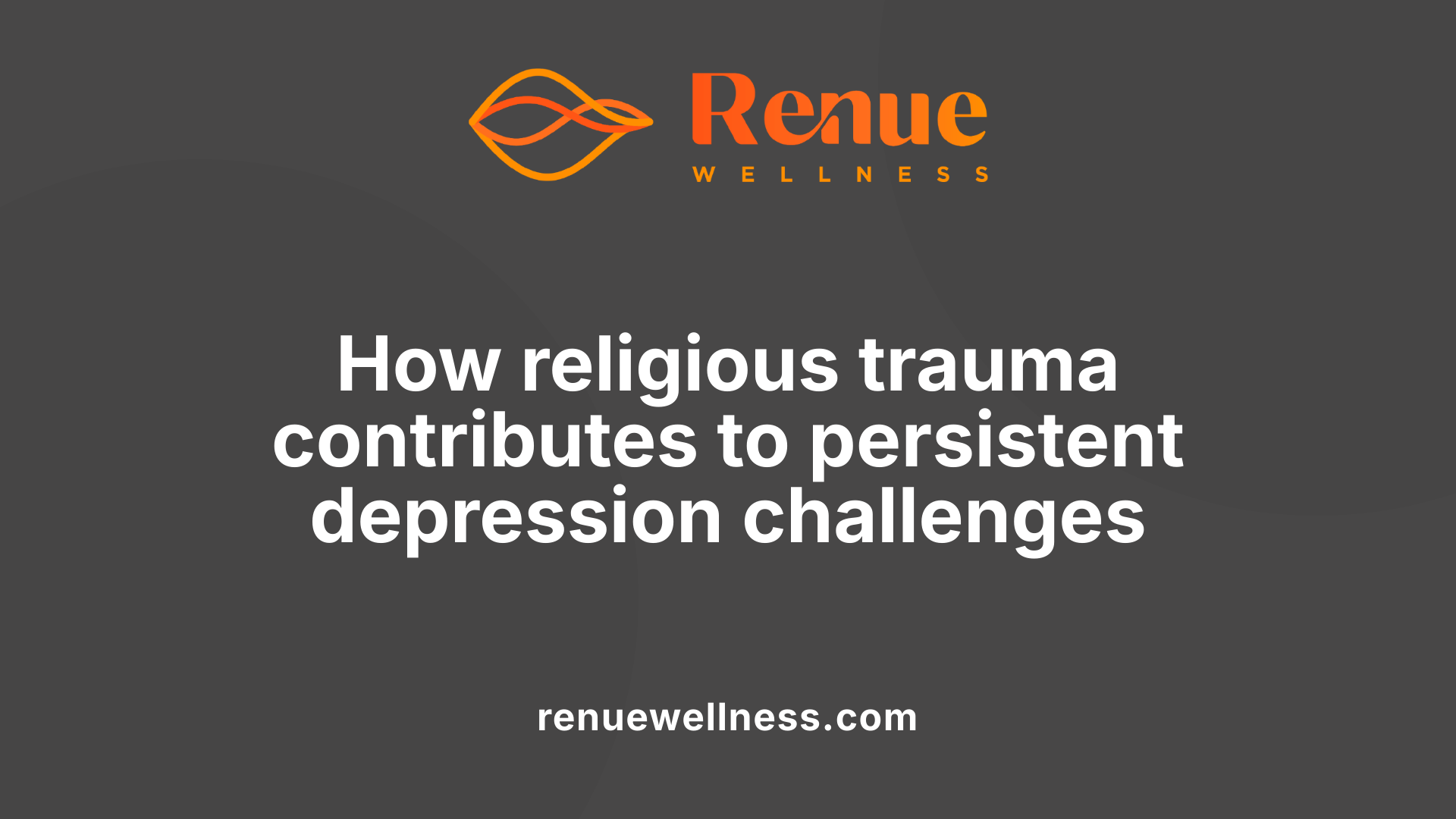
What is the connection between religious trauma and treatment-resistant depression?
Religious trauma is increasingly recognized as a significant factor influencing mental health, particularly in individuals suffering from treatment-resistant depression (TRD). Religious trauma includes emotional and psychological harm caused by harmful religious experiences—such as spiritual abuse, rigid dogma, and ostracism—that can deeply affect a person's psyche.
For some individuals, these traumatic religious experiences contribute to persistent feelings of shame, guilt, and unworthiness. These emotions are often difficult to resolve with standard depression treatments because they reinforce negative core beliefs about oneself. Such beliefs may include feeling inherently flawed or unlovable, which sustain depressive symptoms over time.
This trauma-related distress is often accompanied by intrusive memories and emotional distress that undermine recovery efforts. Conventional pharmacological therapies and standard psychotherapy might not fully address the underlying trauma, leading to resistance in treatment.
In this context, trauma-informed approaches like EMDR (Eye Movement Desensitization and Reprocessing) therapy are gaining recognition. EMDR helps individuals process traumatic memories and reframe negative beliefs, reducing their grip on emotional well-being. This therapy can diminish shame and guilt associated with religious trauma, ultimately making depression more manageable.
Furthermore, religious involvement can sometimes serve as a source of resilience, providing social support, purpose, and hope. However, when religious practices are tied to trauma, they may worsen depressive symptoms if not carefully addressed.
Understanding and treating religious trauma is therefore central to overcoming barriers to recovery in those with TRD. Recognizing the impact of past religious trauma allows clinicians to tailor interventions that directly target these unresolved emotional wounds, opening pathways for more effective treatment outcomes.
Importance of Recognizing Spiritual and Moral Injuries in Treatment

Why is it important to understand spiritual injury and moral injury when treating depression and trauma?
Recognizing spiritual and moral injuries is essential in the context of treating depression and trauma because these wounds go beyond physical symptoms or traditional psychological issues. Spiritual injury often involves deep disruptions to an individual’s core beliefs, sense of purpose, and moral code. Morally injurious experiences, such as betrayal, spiritual abuse, or participation in harmful acts, lead to internal conflicts, shame, guilt, and loss of trust.
These injuries can significantly influence mental health, exacerbating symptoms of depression, anxiety, and post-traumatic stress. For example, individuals who have experienced spiritual abuse or moral violations may struggle with feelings of shame, spiritual abandonment, or guilt, which can hinder recovery and foster persistent despair.
Addressing these injuries provides a more comprehensive approach to healing. It allows clinicians to target specific feelings like betrayal, shame, or guilt that often underlie depression and trauma symptoms. Interventions such as the Building Spiritual Strength program incorporate spiritual assessments and therapeutic techniques that help clients process spiritual wounds. This process reduces spiritual struggles, promotes reconciliation, and fosters hope and purpose.
Furthermore, understanding spiritual injuries can break down barriers that prevent engagement with standard therapies. When spiritual wounds are acknowledged, treatment can facilitate healing through reconciliation, meaning-making, and reconnecting individuals with their beliefs or moral values. This comprehensive view not only alleviates symptoms but also empowers individuals to rebuild their self-worth and resilience.
In summary, integrating the understanding of spiritual and moral injuries into treatment protocols enriches the therapeutic process. It ensures that all aspects of a person’s suffering are addressed, leading to more profound recovery and long-term resilience against depression and trauma-related issues.
Religion, Spirituality, and Mental Health Recovery: A Dual Role

How does spirituality serve as resilience and a source of healing after religious trauma?
Spirituality often acts as a powerful resource for individuals recovering from religious trauma. When nurtured positively, it can provide a sense of hope, purpose, and emotional stability. Many find that practices like prayer, meditation, or mindfulness help them reconnect with their inner selves and foster resilience. Moreover, spirituality linked to community involvement and social support can significantly buffer against depression and anxiety, aiding faster recovery.
Research supports that spiritual coping strategies are associated with posttraumatic growth, which involves transforming trauma into a source of personal strength. For example, finding a renewed purpose or redefining faith can enable individuals to move forward with a sense of hope and renewed identity. This process not only alleviates symptoms of trauma but also promotes overall well-being.
How can addressing spiritual struggles facilitate recovery?
Spiritual struggles—such as feelings of abandonment, guilt, or spiritual disconnection—are common barriers to recovery. Recognizing and exploring these struggles through therapeutic work is vital. Using assessment tools like the Religious and Spiritual Struggles Scale helps clinicians identify areas of conflict or distress.
Effective treatment often involves trauma-informed interventions, such as EMDR or spiritually integrated therapy. These approaches aim to process and resolve negative beliefs, shame, or fear linked to religious experiences. Addressing spiritual struggles can reduce emotional distress and reframe harmful beliefs, paving the way for healing.
Additionally, collaborative efforts with spiritual leaders or clergy can support individuals in rebuilding trust and a positive relationship with their faith or spiritual traditions. Creating a safe space for open dialogue helps individuals express doubts or fears without judgment.
How can individuals rebuild their relationship with faith and belief systems?
Reconstruction involves a deliberate process of deconstruction and reconstruction of spiritual beliefs. Many find value in personally exploring or redefining their faith, often with the help of secular or religious therapists trained in trauma and spiritual care.
Steps to rebuild include setting healthy boundaries with religious communities, critically examining past beliefs, and developing new narratives that honor personal growth and boundaries. Engaging in supportive community groups or spiritual counseling can also facilitate this healing process.
Furthermore, practices such as forgiveness—both of oneself and others—alongside gratitude exercises, can restore a sense of peace. Emphasizing personal values and aligning them with spiritual practices nurtures authenticity and trust in one's spiritual identity.
Overall, integrating spirituality into trauma recovery requires a nuanced, personalized approach that respects individual beliefs and experiences. When managed thoughtfully, it can transform spiritual pain into a resilient foundation for long-term mental health and spiritual well-being.
| Aspect | Description | Additional Details |
|---|---|---|
| Spiritual resilience | Using spirituality as a buffer against trauma and stress | Prayer, meditation, community support |
| Addressing spiritual struggles | Recognizing and healing through therapy and collaboration | EMDR, spiritual counseling, boundaries setting |
| Rebuilding faith | Personal deconstruction and reconstruction of spiritual beliefs | Narrative re-framing, forgiveness, meaningful rituals |
| Outcomes | Enhanced recovery, hope, meaning, and self-worth | Reduced depression, improved emotional health |
This holistic view underscores spirituality’s multifaceted role in healing religious trauma. Properly integrated, it fosters resilience, facilitates reconciliation, and helps individuals reclaim their spiritual and emotional well-being.
The Role of Faith-Based and Holistic Approaches in Addressing Religious Trauma

What is the role of faith-based and holistic approaches in addressing mental health issues related to religious trauma?
Faith-based and holistic approaches are increasingly recognized as essential components in the healing process for individuals affected by religious trauma. Religious trauma, which encompasses emotional and psychological distress caused by harmful religious experiences, spiritual abuse, or rigid dogma, can have profound impacts on mental health, including symptoms of guilt, shame, anxiety, and difficulty trusting or reconnecting with one’s spirituality.
These approaches aim to help individuals process spiritual struggles and rebuild a positive sense of faith and spiritual identity. They often complement traditional clinical therapies, providing an additional layer of support that addresses the spiritual and emotional dimensions of trauma. For many survivors, spiritual support fosters resilience and offers hope amid their healing journey.
Incorporating spiritual assessments into therapy allows clinicians to understand each person’s unique beliefs, values, and experiences. Collaborating with trusted faith leaders, chaplains, or spiritual counselors ensures that interventions are culturally sensitive and respectful of the individual’s faith background. Such partnerships can create a safe space for survivors to explore their spiritual wounds and work towards healing.
Practices like spiritually integrated therapy, meditation, mindfulness, and value-based interventions are valuable tools in this context. For example, reprocessing shame and guilt linked to spiritual abuse through EMDR or cognitive restructuring can help survivors regain a sense of control and self-worth.
Furthermore, holistic approaches emphasize the importance of addressing not just psychological symptoms but also emotional, physical, and spiritual well-being. This may include activities such as supportive prayer, spiritual reflection, group therapy with others who share similar experiences, and alternative healing modalities rooted in spiritual traditions.
Overall, thoughtfully and ethically addressing the spiritual dimensions of trauma can significantly enhance recovery. It enables survivors to reconnect with their faith in a healthy, affirming way and cultivates long-term mental well-being. These approaches empower individuals to transform their pain into growth and resilience, providing a pathway toward healing that honors their spiritual needs and personal history.
Research and Clinical Trials on Religious Trauma and Complex Depression
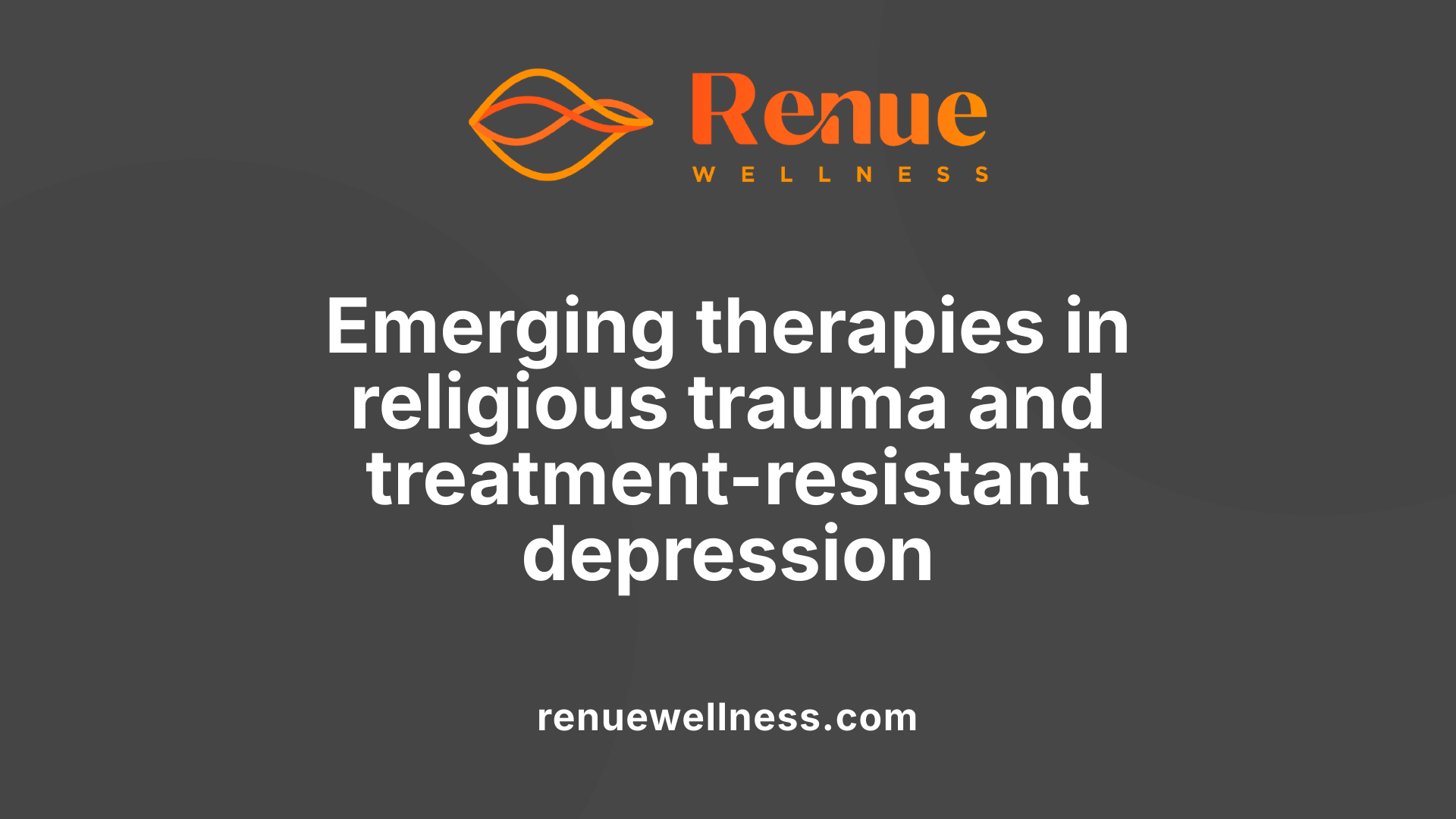
What insights do research and clinical trials provide about the connection between religious trauma and complex depression?
Recent studies and clinical trials shed light on the deep and complex relationship between religious trauma and depression. They reveal that persistent, intractable symptoms of depression—often categorized as complex depression—are frequently linked to prolonged adverse religious experiences. Religious Trauma Syndrome (RTS), a term used to describe the emotional and psychological impact of harmful religious environments, closely correlates with symptoms of complex PTSD and betrayal trauma.
Individuals exposed to authoritarian religious systems or spiritual abuse often experience ongoing identity confusion, emotional dysregulation, and functional impairments. These symptoms are commonly observed in those with treatment-resistant depression (TRD), highlighting a biological and psychological interplay. Neurobiological changes, such as alterations in the hypothalamic–pituitary–adrenal (HPA) axis and increased inflammatory markers, further entrench the depressive state.
Therapies tailored to trauma, including trauma-informed cognitive-behavioral therapy (CBT), have shown promise in addressing religious injuries. Clinical evidence supports that such approaches, when combined with spiritual reconciliation or secular frameworks, can significantly reduce symptoms of depression. Notably, while involvement in religious or spiritual practices generally acts as a protective factor, struggles related to religious guilt, shame, or internal conflict can reverse this benefit, acting instead as triggers for heightened depression.
Emerging research emphasizes that directly addressing religious trauma—by validating traumatic experiences, reducing shame, and fostering healing—can improve treatment outcomes. Therapies like EMDR (Eye Movement Desensitization and Reprocessing), which help process traumatic memories, are gaining recognition for their effectiveness in treating religious trauma-related depression. This supports a broader understanding that trauma and spiritual conflict are integral to addressing complex, resistant cases of depression.
In summary, scholarly and clinical research underscores the importance of integrating trauma-informed care that specifically targets religious injuries within mental health interventions. Addressing spiritual struggles and trauma directly can alleviate chronic symptoms and support recovery for individuals affected by complex depression rooted in religious trauma.
Emerging Therapies and Future Directions in Addressing Religious Trauma and TRD

What are the latest developments and future directions in treating religious trauma and treatment-resistant depression?
Recent advancements in treating religious trauma and therapy-resistant depression (TRD) are opening new possibilities for patients who have not responded to traditional therapies.
One of the most promising areas involves neuromodulation techniques, such as repetitive transcranial magnetic stimulation (rTMS) and deep brain stimulation (DBS). These methods target specific brain circuits implicated in mood regulation and emotional processing. Through these approaches, clinicians aim to modulate abnormal neural activity associated with depression, offering hope for more effective treatment outcomes.
Another frontier is the use of psychedelics, especially psilocybin and ketamine. Research demonstrates that these substances can rapidly and significantly reduce depressive symptoms, particularly in cases where standard antidepressants have failed. Psychedelic-assisted therapy involves carefully controlled settings, providing a potential breakthrough in addressing the neurobiological and psychological underpinnings of TRD.
Institutions like the Centre for Addiction and Mental Health (CAMH) are conducting clinical trials to evaluate the safety and efficacy of these therapies. These studies are crucial for understanding how psychedelics can be integrated into mainstream psychiatric care and whether they can effectively help patients recover from complex conditions such as religious trauma compounded by depression.
Personalized care is increasingly prioritized in treatment planning. This involves comprehensive assessments of trauma history, religious and spiritual backgrounds, and individual psychological profiles. Recognizing the unique factors influencing each patient allows for tailored interventions that combine biological techniques with psychological and spiritual support.
Future directions emphasize multidisciplinary collaboration, integrating neuroscience, psychology, and spiritual care. Such holistic approaches aim to address the complex interplay of trauma, neurobiology, and spirituality.
Ongoing research underscores the importance of continuous evaluation and adaptation of emerging therapies. As new evidence emerges, healthcare providers are encouraged to incorporate innovative modalities into comprehensive treatment plans.
Ultimately, these innovations point toward a future where more effective, personalized, and holistic strategies can dramatically improve outcomes for those suffering from religious trauma and treatment-resistant depression, helping them rebuild hope and resilience.
The Neurobiological Impact of Religious Trauma and Chronic Depression
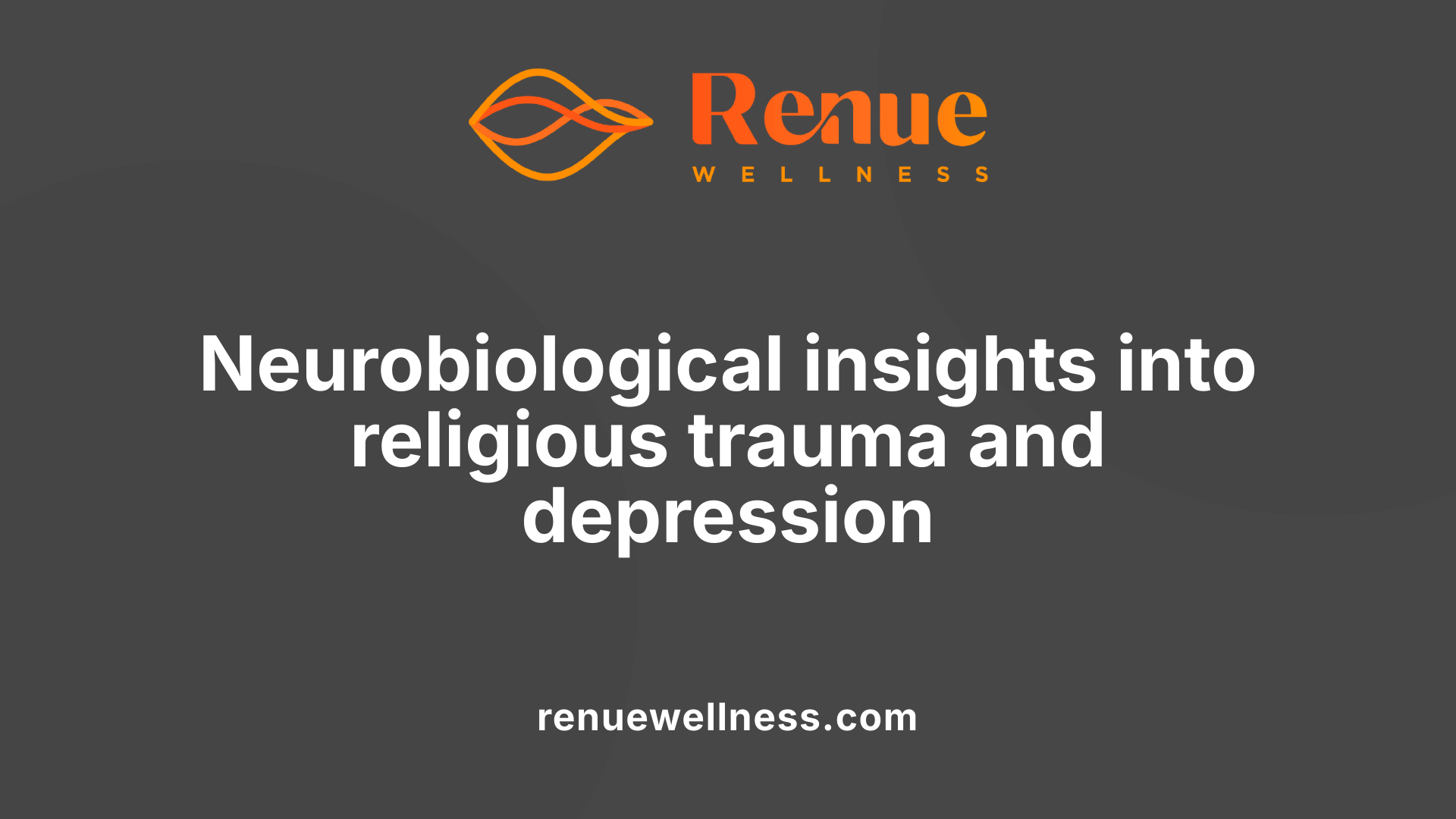
How do traumatic religious experiences influence neurobiological factors in depression?
Traumatic religious experiences often have profound effects on brain chemistry and function, particularly in individuals suffering from depression. Such experiences can trigger lasting changes in the hypothalamic–pituitary–adrenal (HPA) axis, a central stress response system.
When someone endures religious abuse, spiritual neglect, or conflicts arising from their faith, it can lead to dysregulation of cortisol—the primary stress hormone—resulting in either excessive or blunted cortisol production. This imbalance perpetuates a heightened stress response, which can sustain feelings of sadness and anxiety characteristic of depression.
In addition to HPA axis alterations, religious trauma influences immune function by increasing inflammatory markers such as cytokines. Elevated cytokine levels have been consistently linked to depression severity and have been observed to contribute to treatment resistance. The persistent inflammation not only worsens mood symptoms but also hampers neuroplasticity, the brain's ability to reorganize and recover from injury or stress.
Research indicates that these neurobiological shifts play a critical role in maintaining depressive states. They create a vicious cycle wherein stress and inflammation reinforce each other, making recovery more complex.
Efforts to reverse these changes include therapies like EMDR, which helps reprocess traumatic memories, and neuromodulation techniques such as rTMS (repetitive transcranial magnetic stimulation). These interventions aim to restore neurochemical balance, reduce inflammation, and foster neuroplasticity, ultimately supporting mental health recovery. Understanding how religious trauma impacts neurobiology emphasizes the need for integrated treatment approaches that address both psychological and biological aspects of depression.
The Role of Psychotherapy and Pharmacology in Treating Religious Trauma-Related TRD
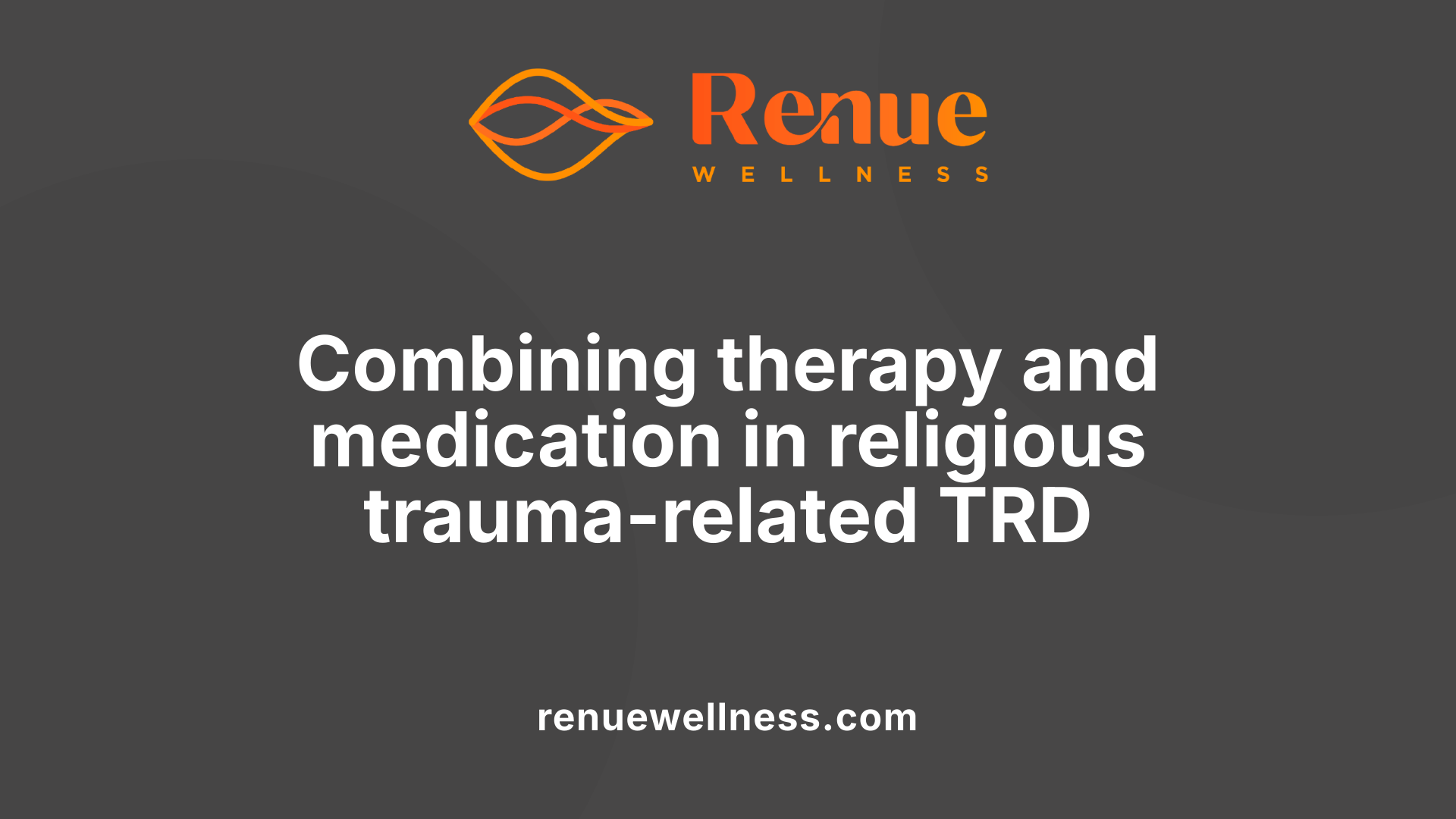
What therapies and medications are effective in combatting religious trauma-related treatment-resistant depression?
Addressing religious trauma-related TRD requires a holistic approach that combines psychological therapies and medications tailored to the individual's history and current symptoms. Trauma-focused psychotherapies, such as Eye Movement Desensitization and Reprocessing (EMDR) and trauma-informed cognitive-behavioral therapy (CBT), play a vital role in reprocessing traumatic religious experiences. EMDR, in particular, has shown strong efficacy in helping patients heal from spiritual abuse, spiritual trauma, and maladaptive beliefs tied to religious experiences. These therapies can alleviate symptoms like guilt, shame, anxiety, and intrusive thoughts, fostering emotional resilience.
In addition to psychotherapy, pharmacological treatments are often necessary, especially in cases of severe or persistent depression. Traditional antidepressants remain a cornerstone, but for treatment-resistant cases, newer options such as ketamine and esketamine have gained prominence. These agents have demonstrated rapid antidepressant effects and are particularly promising for refractory TRD linked to trauma.
Beyond medications, neuromodulation techniques like repetitive transcranial magnetic stimulation (rTMS) and deep brain stimulation (DBS) are emerging as effective options. rTMS, for example, can modulate brain regions involved in mood regulation, offering symptom relief when other treatments fail.
Combining these therapeutic modalities—psychotherapy, medication, and neurostimulation—can provide comprehensive treatment that addresses both the psychological trauma and underlying neurobiological alterations. This integrative approach increases the chances of achieving remission and improving quality of life.
Tailoring interventions to the individual's trauma exposure, spiritual struggles, and biological responses is crucial. For example, incorporating spiritual reconciliation or de-traumatization within therapy can further enhance outcomes. The focus on individualized care ensures that diverse needs of religious trauma survivors with TRD are met effectively and compassionately.
The Impact of Early Life Trauma and the Need for Personalized Treatment Approaches
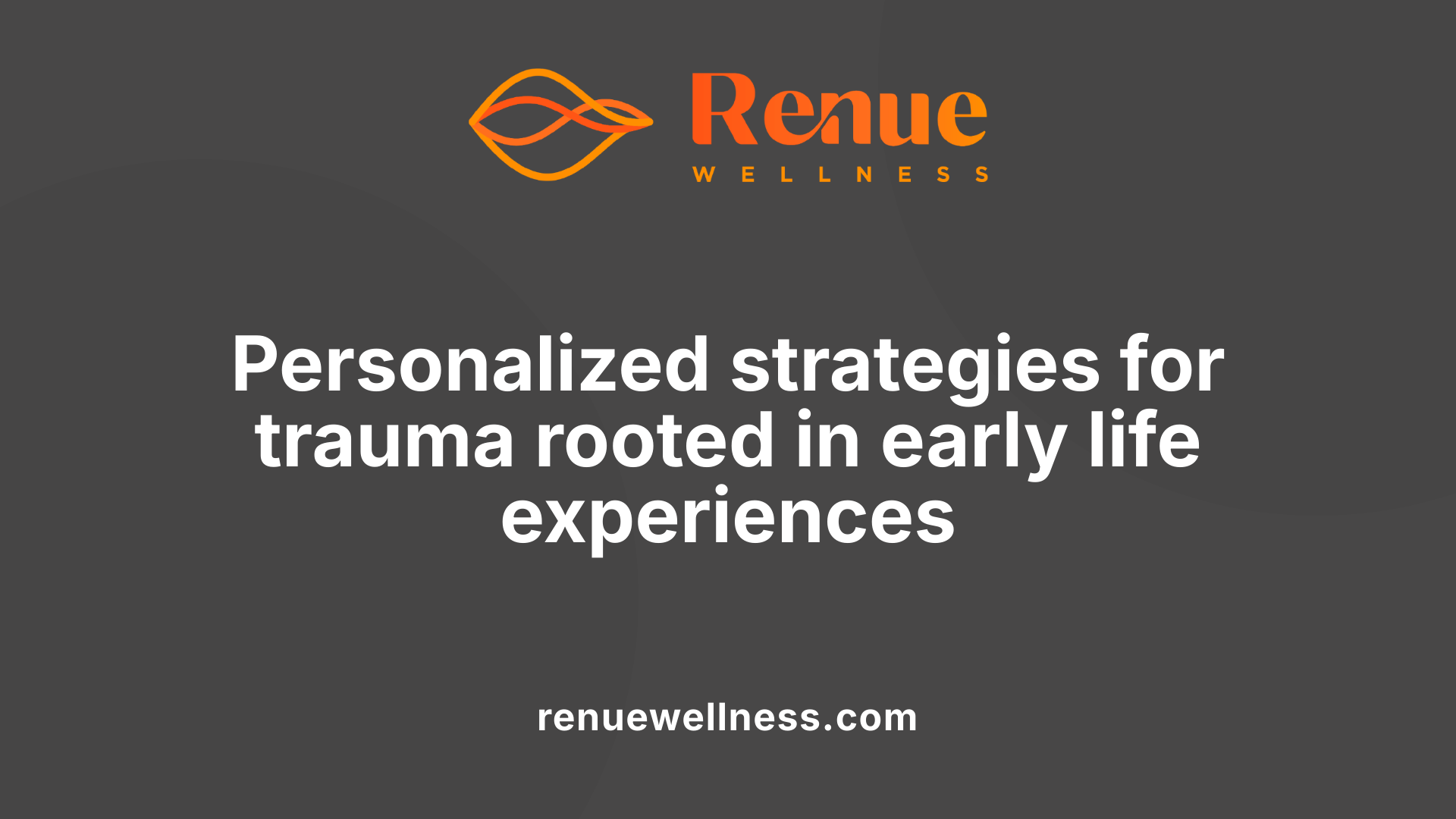
How does early life trauma influence treatment resistance in depression?
Early life trauma (ELT) plays a significant role in shaping the trajectory of depression, especially regarding treatment resistance. Individuals who experience trauma during childhood—such as abuse, neglect, or exposure to authoritarian environments—are at increased risk for developing chronic, treatment-resistant depression (TRD). These traumatic experiences often lead to neurobiological changes, including dysregulation of the hypothalamic-pituitary-adrenal (HPA) axis, elevated levels of inflammatory markers, and altered neuroplasticity.
Research shows that ELT can entrench negative core beliefs and emotional dysregulation, making traditional antidepressant therapies less effective. For example, rigidity in stress response systems and heightened inflammatory activity can diminish responsiveness to pharmacological treatments. Moreover, early trauma can interfere with psychological coping mechanisms, leading to persistent feelings of shame, guilt, or worthlessness.
Recognizing ELT through thorough clinical assessment is crucial. When clinicians identify a history of childhood trauma, they can adapt treatment plans specifically to address these neurobiological and psychological alterations. Trauma-focused therapies, such as Eye Movement Desensitization and Reprocessing (EMDR) and trauma-focused cognitive-behavioral therapy (CBT), have shown promise in reprocessing distressing memories and reformulating negative belief systems.
In addition to psychotherapeutic interventions, biological treatments are also being tailored for trauma-affected patients. For instance, ketamine and neuromodulation techniques like repetitive transcranial magnetic stimulation (rTMS) may be more effective when combined with trauma treatment. Personalizing interventions to target the specific effects of early trauma can ultimately improve remission rates, break the cycle of chronic depression, and foster resilience.
Implementing such personalized approaches emphasizes the importance of a comprehensive assessment that includes trauma history, neurobiological testing, and psychological profiling. This strategy not only enhances treatment efficacy but also offers hope to individuals for whom conventional therapies have failed. Addressing ELT remains a critical component for transforming depression management from a trial-and-error process into a precise, effective practice.
Cultural, Ethical, and Clinical Considerations in Addressing Religious Trauma and Chronic Depression
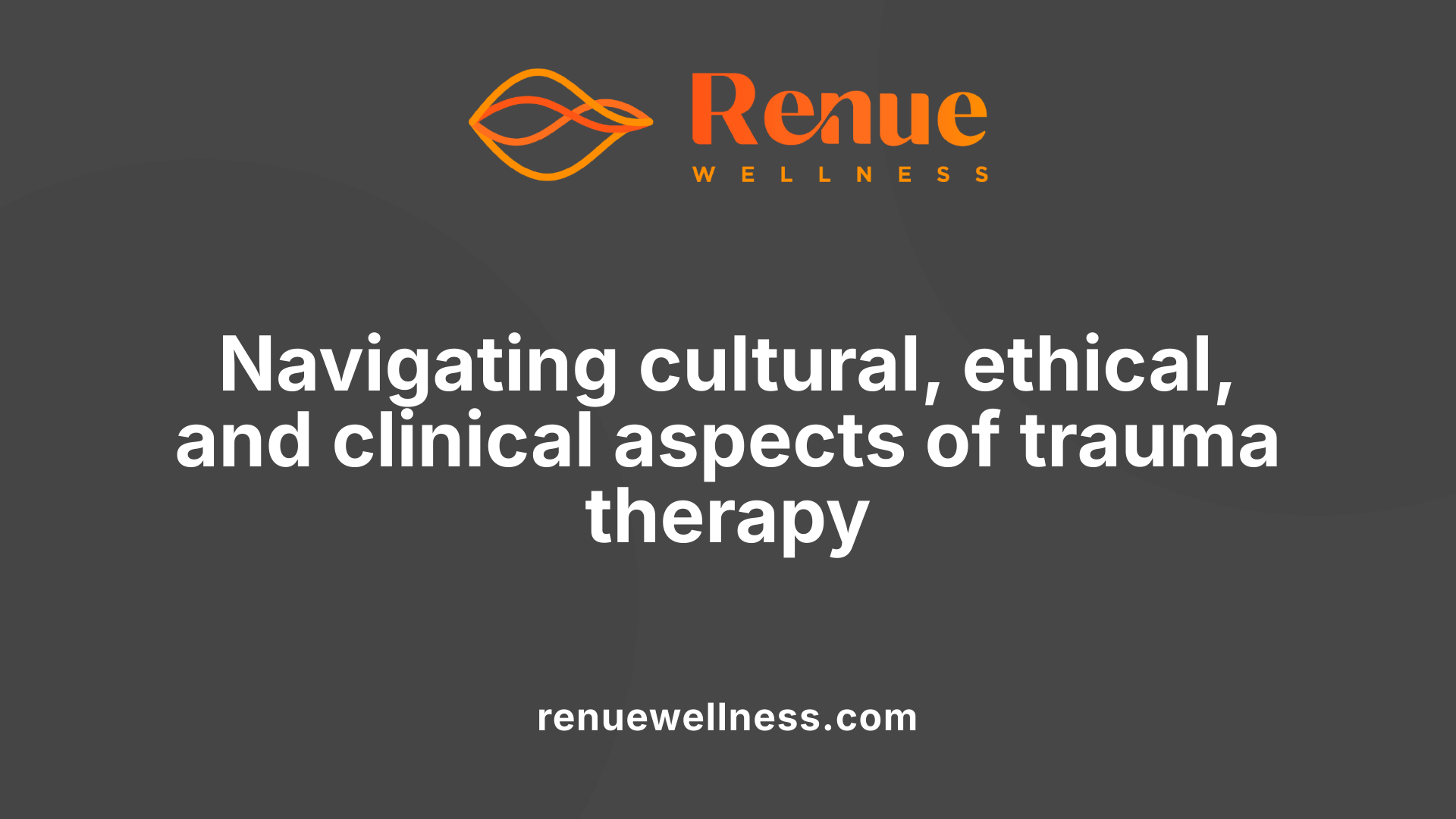
What are the key considerations for clinicians addressing religious trauma in depression treatment?
Addressing religious trauma and chronic depression requires careful, informed, and ethically sound approaches by clinicians. A crucial first step involves understanding the cultural and spiritual background of the individual. Clinicians should adopt a culturally sensitive and trauma-informed mindset, recognizing how harmful religious experiences—such as spiritual abuse, moral injury, or rigid doctrines—can deeply impact mental health.
Respect for personal beliefs and spiritual history is essential. This means avoiding dismissive attitudes or practices that could re-traumatize the patient. Instead, clinicians should validate the individual’s experiences and support healing in ways aligned with their values. Training in cultural competence helps providers identify signs of religious trauma and distinguish them from other mental health issues.
Incorporating collaboration with spiritual leaders, chaplains, or faith communities can foster trust and offer additional support tailored to the patient's context. This collaboration can aid in addressing spiritual struggles, such as feelings of abandonment by or conflict with a Higher Power, which may worsen depression.
Ethical considerations are paramount. Informed consent should be a continuous process, ensuring patients are aware of all treatment options and potential risks. Respecting autonomy means allowing patients to choose therapies that fit their comfort level, including secular trauma-focused approaches or spiritually integrated therapies.
Moreover, avoiding coercive practices such as spiritual bypass, guilt induction, or any form of pressure toward specific beliefs is critical. Supportive, secular therapies like EMDR, cognitive-behavioral therapy (CBT), or acceptance and commitment therapy (ACT) can effectively address religious trauma without relying on religious frameworks.
Tailoring interventions to each individual's needs is vital. For some, exploring and reconstructing personal spiritual beliefs might foster resilience; for others, a secular, evidence-based approach may be more appropriate. Fostering a trusting therapeutic environment ensures safety and facilitates long-term recovery from both trauma and depression.
More Info
To deepen understanding of these considerations, search queries like "clinical considerations in religious trauma," "ethical therapy for treatment-resistant depression," and "cultural competence in mental health" can provide valuable insights.
Combining cultural sensitivity, ethical vigilance, and clinical competence helps practitioners deliver effective, respectful care that can significantly improve outcomes for individuals suffering from depression intertwined with religious trauma. This comprehensive approach supports healing by honoring individual differences and promoting safe, empowering therapeutic experiences.
Ongoing and Future Research Directions in Religious Trauma and Treatment-Resistant Depression

What are future directions for research on religious trauma and treatment-resistant depression?
Advancements in understanding how neuroplasticity interacts with spiritual and traumatic experiences are guiding future research. Scientists are exploring how spiritual interventions might influence brain adaptation processes that underpin recovery from religious trauma and TRD. By investigating these mechanisms, researchers aim to develop more targeted therapies.
One promising area involves the creation of integrative treatment models that meld biological, psychological, social, and spiritual approaches. Such models aim to offer personalized care plans suited to individual needs, especially for those facing complex issues like religious trauma and resistant depression.
Emerging technologies like neuromodulation, including rTMS and deep brain stimulation, and psychedelic-assisted therapies like psilocybin and ketamine, are being evaluated for their safety and effectiveness. Rigorous clinical trials across diverse populations will determine how these innovations can be incorporated into standard treatment protocols.
Research is increasingly emphasizing multi-disciplinary collaboration. Neuroscientists, psychologists, spiritual care providers, and social workers are working together to untangle the multifaceted influences of trauma, spirituality, and brain function. This approach promotes a holistic understanding of how traumatic religious experiences impact mental health.
Long-term, longitudinal studies are crucial to assess the sustainability of treatment benefits. These studies aim to evaluate the effectiveness of combined biological, psychological, and spiritual modalities over extended periods, informing best practices and refining therapy options.
In summary, future research is poised to deepen scientific insights into how neuroplasticity and spirituality intersect, leading to innovative, personalized, and more effective treatment strategies for those battling religious trauma and TRD. As these fields evolve, they hold promise for improving the prognosis and quality of life for affected individuals.
Pathways to Healing and Hope amidst Spiritual Wounds
Addressing religious trauma within the context of treatment-resistant depression requires a nuanced, multidisciplinary approach that recognizes the spiritual and neurobiological dimensions of suffering. Evidence-based therapies like EMDR and trauma-informed CBT, when tailored to individual beliefs and spiritual needs, can foster resilience and recovery. Integrating faith-based and secular interventions, prioritizing trauma and spiritual injury assessment, and advancing research into novel modalities hold promise for transforming outcomes. While spiritual wounds are profound, they also present opportunities for profound growth, hope, and long-term healing—redefining the journey from trauma to resilience.
References
- Religious versus Conventional Psychotherapy for Major Depression ...
- Religious and Spiritual Factors in Depression: Review and ...
- What is Religious Trauma? - EMDR Center of Denver
- Understanding Treatment-resistant Depression: A Missionary's ...
- Bridging early life trauma to difficult-to-treat depression
- Treating Religious Trauma and Spiritual Harm With Combined ... - jstor
- Religious trauma and moral injury from LGBTQA+ conversion ...
- Early or recent trauma in treatment-resistant depression
- Treatment-Resistant Depression | Johns Hopkins Medicine
- Addressing Religious or Spiritual Dimensions of Trauma and PTSD
Recent Posts
Conditions Treated
AnxietyDepressionOCDPTSDPostpartum DepressionPain ManagementSubstance AbuseSuicidal IdeationOur Location


